
Ford Puma vs Peugeot 2008: The Ultimate SUV Comparison for 2025
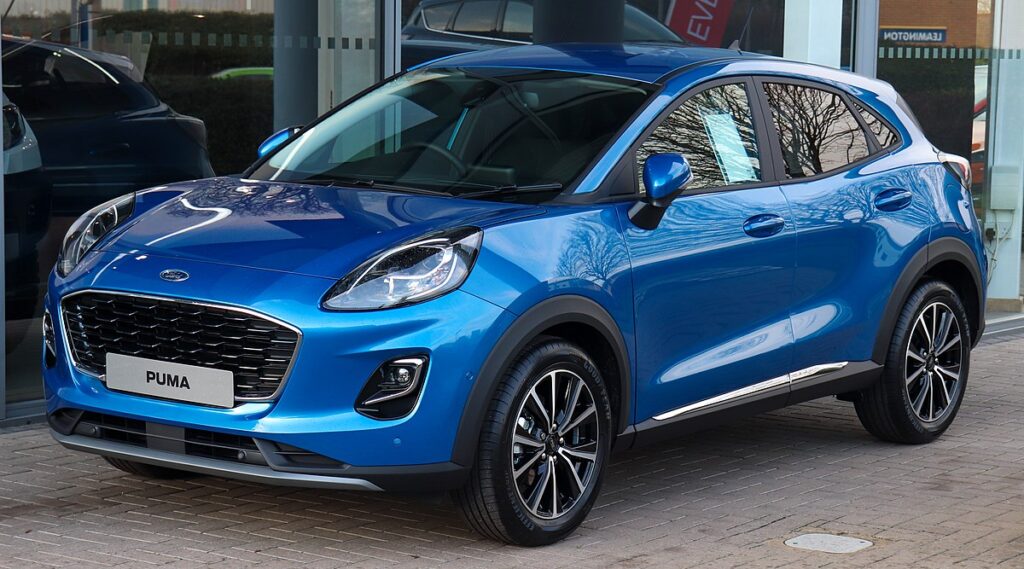
Choosing between the Ford Puma and Peugeot 2008 in 2025 is no simple task. Both compact SUVs blend efficiency, design, and cutting-edge technology, yet each targets a distinct type of driver. In this comprehensive guide, we compare every crucial aspect—from engine performance and electric range to interior comfort, safety, and real-world practicality—to determine which model stands out as the superior choice.
- Overview at a Glance
- Design and Dimensions
- Powertrain and Performance
- Electric and Hybrid Performance
- Driving Dynamics
- Interior and Comfort
- Technology and Connectivity
- Safety and Assistance Systems
- Practicality and Usability
- Environmental Efficiency
- Cost of Ownership
- Trim Lineup Comparison
- Verdict: Which SUV Wins in 2025?
- FAQs
Overview at a Glance
| Feature | Ford Puma (2025) | Peugeot 2008 (2025) |
|---|---|---|
| Starting Price (UK) | £24,800 | £23,800 |
| Power Range | 125–168 HP | 101–156 HP |
| Electric Range | Up to 376 km | Up to 406 km |
| Boot Capacity | 523 L | 434 L |
| Fuel Economy | 5.4–6 L/100 km | 5–6.2 L/100 km |
| Battery Capacity (EV) | 43 kWh | 51 kWh |
| Acceleration (0–100 km/h) | 7.4–9.8 s | 8.3–10.9 s |
| CO₂ Emissions | 0–136 g/km | 0–140 g/km |
Design and Dimensions
Ford Puma: Sporty Urban Confidence
The Ford Puma blends athletic design with everyday functionality. Its bold front grille, sleek LED headlights, and coupe-like roofline convey a dynamic personality. The body measures between 4186–4226 mm in length and 1805 mm in width, giving it a compact yet muscular stance ideal for city driving.
Peugeot 2008: Modern French Sophistication
By contrast, the Peugeot 2008 emphasizes elegance and innovation. At 4304 mm long and 1770 mm wide, it’s slightly larger, exuding a more refined silhouette. Distinctive LED “claw” taillights and sharp body lines enhance its premium aesthetic appeal.
Powertrain and Performance
Ford Puma: Turbocharged Efficiency
The Puma’s range of 1.0-litre EcoBoost mild-hybrid engines delivers between 125–168 HP and 170–290 Nm of torque. The combination of turbocharging and hybrid assistance enables smooth acceleration and impressive fuel economy of 5.4–6 L/100 km.
For enthusiasts, the Puma ST offers up to 200 HP, achieving 0–100 km/h in 6.7 seconds, making it one of the most agile SUVs in its segment.
Peugeot 2008: Refined and Balanced Power
The Peugeot 2008 counters with a 1.2-litre PureTech petrol engine (101–156 HP, 205–270 Nm). Acceleration times range between 8.3–10.9 seconds, maintaining a refined and quiet driving experience.
Both models use front-wheel drive, but the Puma’s lighter structure (1316–1563 kg) gives it a handling edge over the 2008’s 1263–1623 kg range.
Electric and Hybrid Performance
Ford Puma Electric: Compact Power with Efficiency
The Puma Electric combines a 43 kWh battery with efficient energy recuperation systems, achieving an electric range of up to 376 km. It consumes just 13.1–13.7 kWh/100 km, positioning it as a smart choice for eco-conscious urban drivers.
Peugeot e-2008: Extended Range and Quick Charge
The Peugeot e-2008 steps ahead with a 51 kWh battery, allowing a range up to 406 km. With 15.5 kWh/100 km consumption and fast-charging capabilities (10–80% in under 30 minutes), it’s ideal for longer journeys.
You may be interested in reading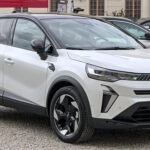 Ford Puma vs Renault Captur: In-Depth Comparison (2025)
Ford Puma vs Renault Captur: In-Depth Comparison (2025)Driving Dynamics
| Attribute | Ford Puma | Peugeot 2008 |
|---|---|---|
| Transmission Options | 6-speed Manual / 7-speed DCT | 6-speed Manual / 8-speed Auto |
| Steering Feedback | Sport-tuned, precise | Comfort-oriented, smooth |
| Suspension Setup | Firm and agile | Softer for comfort |
| Ride Quality | Engaging and responsive | Relaxed and refined |
The Ford Puma prioritizes driver engagement, particularly in ST-Line trims, offering sport-tuned suspension for sharper cornering. Meanwhile, the Peugeot 2008 focuses on serenity, with a suspension system tuned for comfort and stability.
Interior and Comfort
Ford Puma: Practical and Tech-Savvy
Inside the Puma, functionality meets technology. The 523-litre boot (expandable with the innovative MegaBox) outclasses most competitors. The SYNC 3 infotainment system with an 8-inch display supports Apple CarPlay and Android Auto, while the digital cluster enhances driver awareness.
Peugeot 2008: Immersive i-Cockpit Design
The Peugeot 2008 embraces a futuristic feel with its 3D i-Cockpit. The compact steering wheel and raised digital display promote intuitive control. While its 434-litre boot is smaller, its superior materials and ambient lighting create a premium cabin atmosphere.
Technology and Connectivity
- Ford Puma includes wireless charging, Bang & Olufsen sound system, and OTA (over-the-air) updates.
- Peugeot 2008 integrates real-time navigation, voice commands, and smartphone mirroring with high-definition graphics.
Both models deliver high-end infotainment, yet Peugeot’s 3D display adds a futuristic touch unmatched in its class.
Safety and Assistance Systems
Both SUVs are equipped with advanced driver-assistance systems (ADAS):
| Feature | Ford Puma | Peugeot 2008 |
|---|---|---|
| Adaptive Cruise Control | ✅ | ✅ |
| Lane Keeping Assist | ✅ | ✅ |
| Autonomous Emergency Braking | ✅ | ✅ |
| Blind Spot Monitoring | ✅ | ✅ |
| Traffic Sign Recognition | ✅ | ✅ |
| Parking Assist | ✅ | ✅ |
However, Ford’s Co-Pilot360 suite provides more refined lane centering and adaptive control, giving the Puma a slight technological advantage in driver confidence.
Practicality and Usability
Cargo and Storage
The Ford Puma’s 523 L trunk (plus a waterproof 80 L MegaBox underfloor) makes it a standout for versatility.
The Peugeot 2008 offers 434 L, sufficient for daily use but less adaptable for bulky cargo.
Seating and Comfort
Both SUVs seat five passengers, though the Peugeot provides a slightly roomier rear leg area, while the Puma’s seats are ergonomically superior with enhanced lateral support in sport trims.
Environmental Efficiency
Both models feature mild-hybrid and electric versions to minimize emissions:
You may be interested in reading Ford Puma vs Renault Captur: In-Depth Comparison (2025)
Ford Puma vs Renault Captur: In-Depth Comparison (2025) Ford Puma CO₂ Emissions: Complete Data, Efficiency, and Environmental Impact
Ford Puma CO₂ Emissions: Complete Data, Efficiency, and Environmental Impact- Ford Puma: 0–136 g/km CO₂
- Peugeot 2008: 0–140 g/km CO₂
Their mild-hybrid systems optimize energy recuperation, reducing fuel consumption during stop-and-go traffic.
Cost of Ownership
| Cost Factor | Ford Puma | Peugeot 2008 |
|---|---|---|
| Base Price (UK) | £24,800 | £23,800 |
| Top Trim Price | £36,300 | £40,300 |
| Annual Road Tax (Hybrid) | £180 | £180 |
| Service Intervals | 12 months / 10,000 miles | 12 months / 12,500 miles |
| Estimated Resale Value (3 years) | 62% | 59% |
While both models are competitively priced, the Puma’s stronger resale value and lower maintenance costs make it a financially smarter long-term choice.
Trim Lineup Comparison
| Ford Puma Trims | Peugeot 2008 Trims |
|---|---|
| Titanium | Active |
| ST-Line | Allure |
| ST-Line X | GT |
| ST | GT Premium |
Ford emphasizes sportiness across trims, whereas Peugeot offers refined luxury and comfort-oriented finishes.
Verdict: Which SUV Wins in 2025?
| Category | Winner |
|---|---|
| Design and Style | Peugeot 2008 |
| Performance and Handling | Ford Puma |
| Interior Quality | Peugeot 2008 |
| Technology and Infotainment | Peugeot 2008 |
| Boot Space and Practicality | Ford Puma |
| Electric Range | Peugeot 2008 |
| Value for Money | Ford Puma |
Overall Winner: Ford Puma (by a narrow margin)
The Ford Puma takes the crown for its thrilling drive, clever storage, and superior hybrid performance. It’s the better all-rounder for those who enjoy dynamic driving without sacrificing practicality.
However, if design finesse, electric efficiency, and luxury interiors top your list, the Peugeot 2008 remains an exceptional choice.
FAQs
1. Which SUV is faster, the Ford Puma or Peugeot 2008?
The Ford Puma ST is faster, reaching 0–100 km/h in 6.7 seconds, outperforming the Peugeot 2008’s best 8.3 seconds.
2. Does the Peugeot 2008 have a better electric range?
Yes. The e-2008 achieves up to 406 km on a single charge versus the Puma’s 376 km.
3. Which SUV has more cargo space?
The Ford Puma leads with 523 litres, plus its innovative MegaBox underfloor storage.
4. Is the Ford Puma more fuel-efficient?
For mild-hybrid versions, yes. The Puma averages 5.4 L/100 km, slightly better than the 2008’s 5.8 L/100 km.
 Ford Puma vs Renault Captur: In-Depth Comparison (2025)
Ford Puma vs Renault Captur: In-Depth Comparison (2025) Ford Puma CO₂ Emissions: Complete Data, Efficiency, and Environmental Impact
Ford Puma CO₂ Emissions: Complete Data, Efficiency, and Environmental Impact Ford Kuga vs Ford Puma: The Ultimate 2025 SUV Comparison
Ford Kuga vs Ford Puma: The Ultimate 2025 SUV Comparison5. Which is better for long-term ownership?
The Ford Puma, with stronger resale value and lower maintenance costs, edges out the Peugeot in long-term value.
If you want to know other articles similar to Ford Puma vs Peugeot 2008: The Ultimate SUV Comparison for 2025 you can visit the category Blog.
Deja una respuesta

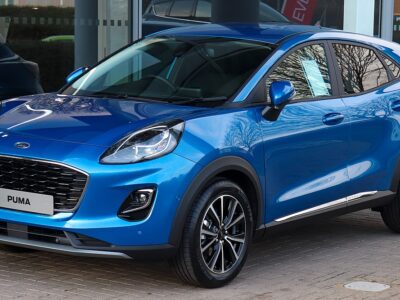
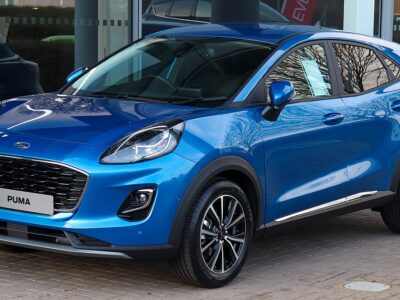
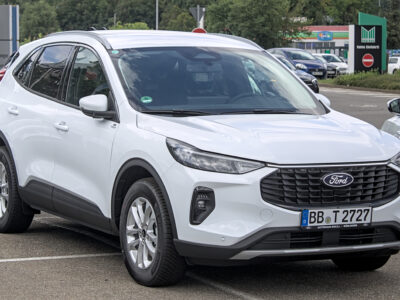
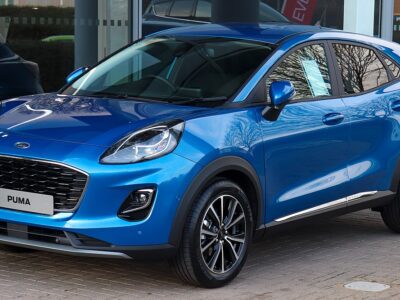
More content of your interest